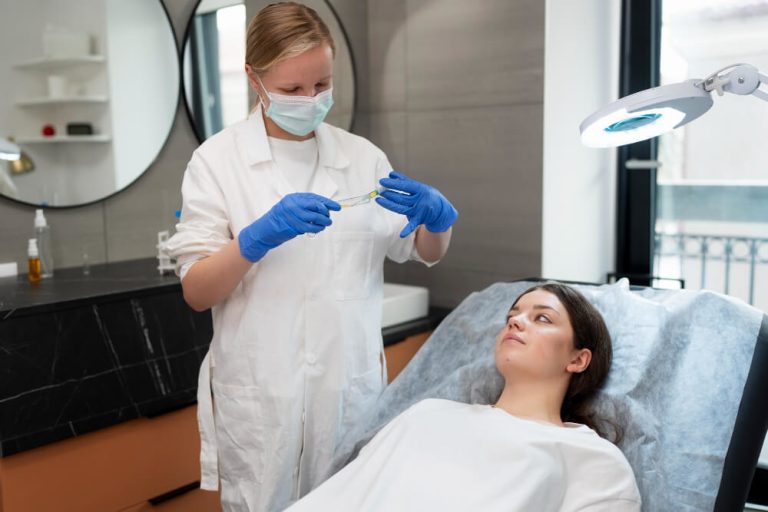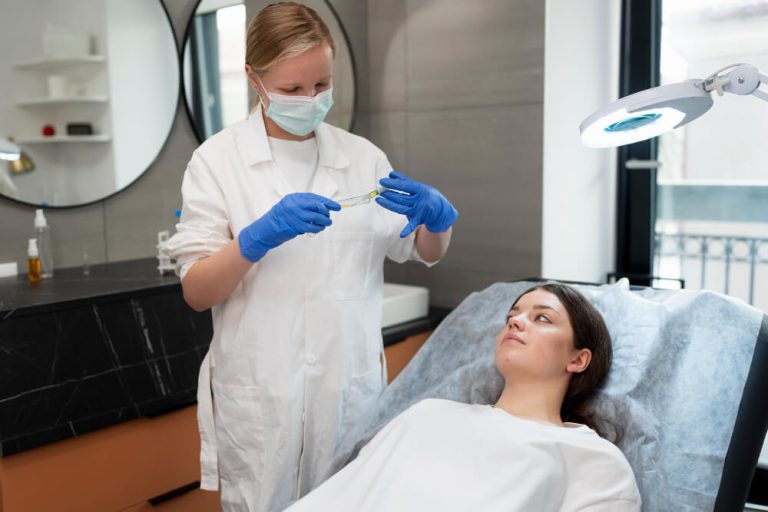Menopause Training: Your Blueprint for a Stronger, Healthier You
Menopause is often discussed in hushed tones, framed as an ending marked by uncomfortable symptoms and inevitable decline. But this perspective is outdated and incomplete. This natural biological transition is not a finish line; it is a new chapter that presents a powerful opportunity to take control of your long-term health and well-being in a way you may never have before.
Embracing this phase means actively participating in your health journey. This is where the concept of ‘menopause training’ comes into play. It is a comprehensive approach that goes far beyond simply managing hot flashes. It involves consciously training your body, your diet, your mind, and your lifestyle to navigate the changes and build a foundation for a vibrant, energetic future.
This is not about fighting against your body. It is about working with it. By understanding the physiological shifts occurring, you can implement targeted strategies to mitigate challenges and enhance your quality of life. The right kind of menopause training equips you with the knowledge and tools to not just survive menopause, but to truly thrive through it and for all the decades that follow.

Why is Menopause More Than Just Hot Flashes?
While hot flashes and night sweats are the most well-known symptoms, they are only a small part of the story. Menopause is defined as the point in time 12 months after a woman’s last period. The years leading up to it, known as perimenopause, and the years after, postmenopause, are characterized by significant hormonal fluctuations, primarily a decline in estrogen.
Estrogen is not just a reproductive hormone. It has hundreds of jobs throughout the body, acting on your brain, bones, heart, skin, and blood vessels. When its levels drop, the impact is systemic. This is why symptoms can be so varied and widespread, affecting everything from your physical strength to your emotional state.
Understanding this systemic impact is the first step in effective menopause training. Your metabolism may slow down, making weight management more challenging. Your risk for certain health conditions, like osteoporosis and heart disease, begins to increase. You might experience changes in your sleep patterns, mood, memory, and even joint comfort. Recognizing that these are all connected to the same hormonal shift empowers you to address them holistically, rather than as separate, unrelated problems.
This knowledge transforms your perspective from reactive to proactive. Instead of just waiting for a symptom to appear and then trying to fix it, you can begin implementing strategies that support your entire system. You can train your body to be more resilient, your bones to be stronger, and your mind to be clearer, building a robust defense against the potential challenges of this life stage.

How Does Exercise Become a Menopause Superpower?
If there were a single magic bullet for managing the menopause transition, it would be consistent, intelligent exercise. Physical activity is profoundly impactful during this time, addressing many of the core issues that arise from hormonal changes. It helps manage weight, protects your heart, strengthens your bones, boosts your mood, improves sleep, and increases your energy levels.
Think of exercise not as a chore, but as a direct conversation with your body. Each session sends powerful signals to your muscles, bones, and brain to adapt and become stronger. The key is to move away from the ‘one-size-fits-all’ workout mentality and embrace a varied routine that specifically targets the needs of your changing body. This means incorporating a mix of strength training, cardiovascular work, and flexibility exercises.
Your exercise routine becomes a cornerstone of your personal menopause training program. It is one of the most powerful levers you can pull to directly influence how you feel day-to-day and to protect your health for the long term. The positive effects are both immediate, like a better mood after a walk, and cumulative, like building a stronger skeleton over time.

What Types of Exercise are Best for Bone Health?
One of the most critical health concerns during and after menopause is bone density loss. Estrogen plays a vital role in the constant process of bone remodeling. As estrogen levels fall, the rate of bone breakdown can outpace the rate of bone formation, leading to weaker, more brittle bones and an increased risk of osteoporosis and fractures.
To combat this, you need to give your bones a reason to stay strong. The most effective way to do this is through weight-bearing and resistance exercises. These activities place a healthy stress on your skeleton, which signals your bone-building cells, called osteoblasts, to get to work laying down new, dense bone tissue.
Weight-bearing exercises are any activity where you support your own body weight. This includes activities like brisk walking, jogging, dancing, hiking, and stair climbing. The impact, even a gentle one, stimulates your bones. For a deeper dive into how this works, you can explore detailed guides on exercise for strong bones.
Resistance training, or strength training, is equally crucial. This involves working your muscles against an opposing force, such as free weights, resistance bands, weight machines, or even your own bodyweight with exercises like squats and push-ups. When your muscles pull on your bones to lift a weight, it creates a powerful stimulus for bone growth. A consistent strength training program is a non-negotiable for skeletal health as you age, a fact supported by extensive research showing how you can exercise to boost your mood and bone health during menopause.

Can Cardio Help with Menopause Symptoms?
Cardiovascular exercise is essential for everyone, but it takes on special importance during menopause. The protective effects of estrogen on the heart and blood vessels diminish during this transition, leading to an increase in cardiovascular disease risk for women. Regular cardio is your best defense.
Activities like swimming, cycling, running, or using an elliptical machine strengthen your heart muscle, improve circulation, help manage blood pressure, and improve your cholesterol profile. It also plays a significant role in managing the metabolic changes of menopause. As your metabolism naturally slows, cardio helps burn calories and improve your body’s sensitivity to insulin, which can help prevent the accumulation of visceral fat, the dangerous type of fat that surrounds your organs.
Beyond heart health, cardio is a powerful mood regulator. It releases endorphins, your body’s natural feel-good chemicals, which can combat the anxiety and low mood that sometimes accompany hormonal shifts. A brisk walk or a bike ride can be an incredibly effective tool for clearing your head and improving your outlook. It can also improve sleep quality, helping you fall asleep faster and wake up feeling more rested, which in turn helps manage a host of other symptoms.

What About Flexibility and Balance?
While strength and cardio are pillars of a menopause exercise plan, flexibility and balance should not be overlooked. As we age, muscles and connective tissues can become tighter, leading to stiffness, joint pain, and an increased risk of injury. The aches and pains sometimes attributed to menopause can often be improved with a dedicated flexibility practice.
Activities like yoga, Pilates, and regular stretching help maintain your range of motion, improve posture, and alleviate muscular tension. Yoga, in particular, can be beneficial as it often incorporates breathing exercises and mindfulness, which help to calm a nervous system that can be in overdrive during menopause. This can directly help with feelings of anxiety and stress.
Balance training is another crucial component. As bone density decreases, a fall becomes a much more serious event. Exercises that challenge your stability, such as standing on one leg, yoga balance poses, or Tai Chi, help improve your proprioception, which is your body’s awareness of its position in space. This makes you less likely to fall and more capable of catching yourself if you do stumble, significantly reducing your risk of a fracture.

Is There a ‘Best’ Exercise Routine for Menopause?
There is no single ‘best’ routine, but there is a best approach: variety. The ideal menopause training plan combines all three elements. Aim for two to three days of strength training per week, focusing on all major muscle groups. Incorporate at least 150 minutes of moderate-intensity cardiovascular exercise, or 75 minutes of vigorous-intensity cardio, spread throughout the week.
On top of that, integrate flexibility and balance work several times a week. This could be a dedicated yoga class or simply 10-15 minutes of stretching and balance drills after your cardio or strength workouts. The key is consistency and listening to your body. Some days you may have the energy for a high-intensity session; on other days, a restorative walk or gentle yoga might be what you need.
For those looking to build a well-rounded plan, it is helpful to consult resources that outline various options. You can find excellent overviews that discuss the synergy between different types of exercise and menopause. These guides reinforce the message that a combination of approaches yields the best results for both symptom management and long-term health.
Ultimately, the goal is to create a sustainable and enjoyable routine. This is not a temporary fix but a lifelong strategy. From building stronger bones to toning muscles you may not have thought about since childbirth, a well-rounded plan covers all the bases. In fact, many experts agree that a holistic approach provides the best exercises for menopause, highlighting the importance of including everything from resistance training to pelvic floor work.

How Can You Train Your Pelvic Floor?
One area of the body that is particularly affected by the loss of estrogen is the pelvic floor. This group of muscles and ligaments acts like a supportive hammock for your bladder, uterus, and bowel. Estrogen helps keep these tissues strong, thick, and elastic. When estrogen levels decline, these tissues can become thinner, weaker, and less flexible.
This can lead to a condition known as Genitourinary Syndrome of Menopause, or GSM. The symptoms can include urinary urgency or frequency, stress incontinence (leaking urine when you cough, sneeze, or exercise), vaginal dryness, and discomfort during intimacy. These issues are incredibly common but often go undiscussed, causing many women to suffer in silence.
Just like any other muscle in your body, the pelvic floor can and should be trained. The most well-known exercises are Kegels. To identify the right muscles, try to stop the flow of urine midstream. Those are the muscles you want to target. Once you have identified them, you can perform the exercise anytime by squeezing and holding those muscles for a few seconds, then relaxing, without tensing your abdomen, buttocks, or thighs.
Regularly performing pelvic floor exercises can significantly improve muscle tone, providing better support for your pelvic organs and improving or even resolving symptoms of incontinence. For women experiencing more significant symptoms of GSM, a combination of these exercises and other medical interventions can be life-changing. Understanding the available options is key, and for those seeking more information, exploring genitourinary syndrome of menopause gsm treatment protocols can provide a comprehensive overview of the approaches healthcare professionals use.

What Role Does Nutrition Play in Menopause Training?
Training for menopause is not just about what you do in the gym; it is equally about what you do in the kitchen. Nutrition becomes a powerful tool for managing symptoms, supporting your changing body, and reducing long-term health risks. Your dietary choices can directly influence your bone density, muscle mass, heart health, and even the frequency of hot flashes.

Which Nutrients are Most Important?
During the menopause transition, certain nutrients become superstars. Calcium and Vitamin D are the dynamic duo for bone health. Since your body is more vulnerable to bone loss, ensuring an adequate intake is critical. Dairy products, fortified plant milks, leafy greens, and sardines are excellent sources of calcium, while sunlight, fatty fish, and fortified foods provide Vitamin D.
Protein is another crucial nutrient. As we age, we tend to lose muscle mass in a process called sarcopenia, and the hormonal shifts of menopause can accelerate this. Eating sufficient protein at each meal helps preserve and even build lean muscle, which is vital for maintaining a healthy metabolism, supporting your bones, and staying strong and functional. Aim for sources like lean meats, fish, eggs, dairy, legumes, and tofu.
Phytoestrogens, which are plant-based compounds that can mimic the effect of estrogen in the body, may also be helpful. Foods like soybeans, chickpeas, lentils, and flaxseeds contain these compounds and may help alleviate some symptoms like hot flashes for some women. Additionally, healthy fats from sources like avocados, nuts, seeds, and olive oil are essential for brain health, reducing inflammation, and supporting your cardiovascular system.

How Can Diet Help Manage Symptoms?
Beyond getting the right nutrients, your overall dietary pattern can make a big difference. Many women find that certain foods or drinks can trigger or worsen hot flashes. Common culprits include caffeine, alcohol, and spicy foods. Experimenting with reducing your intake of these items can be a simple yet effective strategy.
Focusing on a whole-foods diet rich in fruits, vegetables, and fiber can help with weight management and blood sugar control. Fiber is particularly important for gut health, which is linked to everything from your immune system to your mood. A healthy gut microbiome can play a supportive role during this transition.
Finally, do not underestimate the power of hydration. Dehydration can worsen fatigue, lead to headaches, and contribute to dry skin. Drinking plenty of water throughout the day is a foundational habit that supports every system in your body and can help you feel more energetic and clear-headed.

Is Training Your Mind Just as Important?
Menopause training must include the mind. The brain is rich with estrogen receptors, so when hormone levels fluctuate and decline, it is no surprise that cognitive and emotional symptoms can arise. Many women report experiencing brain fog, memory lapses, difficulty concentrating, increased anxiety, irritability, and mood swings.
These experiences are real and physiological. It is not ‘all in your head’; it is in your hormones and how they affect your brain chemistry. Acknowledging this is the first step. The second is to actively train your brain and manage your mental well-being with the same intention you apply to your physical health.

What are Effective Mental Training Techniques?
Stress management is paramount. The menopause transition can be a stressful time, and high levels of the stress hormone cortisol can exacerbate symptoms like hot flashes, sleep disturbances, and weight gain. Practices like mindfulness, meditation, and deep breathing exercises can help calm the nervous system and build resilience to stress.
Prioritizing sleep hygiene is also a form of mental training. Poor sleep affects everything, especially mood and cognitive function. Create a relaxing bedtime routine, ensure your bedroom is dark and cool, and avoid screens before bed. This can help improve sleep quality, which has a direct positive impact on how you feel mentally and emotionally the next day.
Keep your brain active and engaged. Challenge your mind by learning a new skill, playing brain games, reading, or doing puzzles. This helps build cognitive reserve and can combat feelings of brain fog. Just like physical exercise strengthens your body, mental exercise strengthens your brain, forging new neural pathways and keeping you sharp.

What About Advanced Medical and Cellular Training?
For many, a combination of exercise, nutrition, and mental wellness strategies is enough to navigate menopause successfully. However, it is also important to be aware of the more advanced medical options and the deeper science behind aging. Understanding these aspects allows you to have more informed conversations with your healthcare providers and make the best decisions for your individual needs.

How Do Hormones Fit into the Picture?
Menopause Hormone Therapy, or MHT, involves replacing the hormones your body is no longer producing, primarily estrogen and often progesterone. For women with severe or debilitating symptoms, such as intense hot flashes, night sweats, and severe GSM, MHT can be an incredibly effective treatment that significantly improves quality of life.
The decision to use MHT is a personal one and should be made in consultation with a knowledgeable doctor who can assess your personal and family health history. For practitioners and those interested in the clinical side, understanding the nuances of treatment is key. There are sophisticated approaches to MHT, and learning about advanced menopause hormone therapy mht prescribing reveals the depth of knowledge required to tailor these treatments effectively and safely.

What is Happening at a Cellular Level?
To truly understand the long-term health implications of menopause, it is helpful to look at what is happening at the microscopic level. One of the key processes in aging is cellular senescence. This is when cells stop dividing but do not die, instead remaining in the body and releasing inflammatory substances that can damage surrounding healthy cells. These ‘zombie cells’ are linked to many age-related conditions.
The decline in estrogen during menopause appears to accelerate this process of cellular senescence. This provides a deeper explanation for why the risk of certain diseases increases after menopause. It is not just about the absence of a hormone; it is about the downstream effects on the fundamental processes of aging within our very cells.
This is the cutting edge of longevity science. While it is a complex topic, having a basic grasp of it helps frame menopause not as an isolated event, but as part of the broader context of human aging. For those with a scientific curiosity or for medical professionals wanting to stay at the forefront, delving into the science of cellular senescence for doctors offers a fascinating look at the mechanisms that drive aging and how they relate to the menopausal transition.
Ultimately, menopause training is about empowerment through knowledge and action. It is a holistic commitment to your health that encompasses how you move, what you eat, how you think, and the medical choices you make. By taking a proactive and comprehensive approach, you can redefine this chapter of your life, building a future that is not just free of symptoms, but full of strength, vitality, and well-being.
Frequently Asked Questions

How should I approach discussing sensitive symptoms like vaginal dryness or low libido if a patient seems hesitant?
To address sensitive topics effectively, it is essential to first establish a safe and non-judgmental environment. You can normalize these issues by using gentle, open-ended questions like, "Many women experience changes in their intimate health or comfort during menopause; is this something you have noticed?" The use of a pre-consultation symptom questionnaire can also serve as an excellent icebreaker, allowing you to refer to something the patient has already acknowledged. This positions you as an informed and empathetic professional ready to discuss all aspects of their health.
Furthermore, framing the conversation around medical consequences or quality of life can make it feel less personal and easier to discuss. For example, you can link vaginal atrophy to the increased risk of urinary tract infections or explain how low libido can impact relationships and overall well-being. By providing this clinical context, you empower the patient to see the conversation as a necessary part of managing their health, rather than an intrusive personal inquiry.

What is the best way to explain the risks of Menopause Hormone Therapy (MHT) without causing unnecessary fear?
When discussing MHT risks, it is crucial to use absolute risk figures rather than relative percentages, as the latter can often sound more alarming than they are. For instance, explain the small number of additional cases per 1,000 women over five years, and put this into perspective by comparing it to more familiar lifestyle risks, such as those from obesity or alcohol consumption. Always present this information alongside a clear explanation of the significant benefits, including profound symptom relief and protection against osteoporosis, to ensure a balanced view.
This conversation must also be framed around the principle of individualization and shared decision-making. Reassure the patient that treatment plans are tailored to their specific health profile, age, and symptom severity, using the lowest effective dose for the appropriate duration. Emphasize that regular follow-up appointments are a key part of the strategy to monitor their health and adjust treatment as needed, which helps build trust and reduce anxiety.

Beyond MHT, what are the most crucial lifestyle interventions to recommend during a menopause consultation?
Focus on evidence-based lifestyle changes that address the most significant long-term health shifts associated with menopause. Strongly recommend regular weight-bearing and resistance exercises to counteract the loss of bone density and muscle mass, which are critical for preventing osteoporosis and maintaining metabolic health. On the dietary front, advise on increasing calcium and vitamin D intake for bone support and incorporating plant-based estrogens from sources like soy and flaxseed, which may help manage vasomotor symptoms.
In addition, stress management and sleep hygiene are paramount, as elevated cortisol and poor sleep can worsen many menopausal symptoms like hot flashes and mood swings. Suggest concrete strategies such as mindfulness, cognitive-behavioral therapy (CBT) techniques for insomnia, and limiting caffeine and alcohol intake. These foundational lifestyle habits not only help manage symptoms directly but also improve a patient’s overall health and resilience during this transition.
Discover the most comprehensive functional medicine training, longevity training, and biohacking certification programs designed specifically for healthcare professionals, medics, and clinic owners who want to master regenerative medicine protocols and anti-aging therapies.







